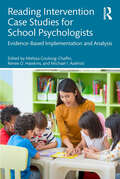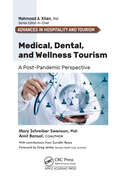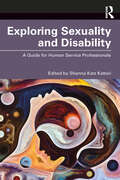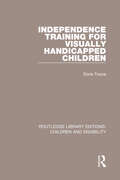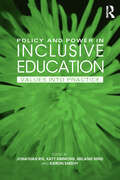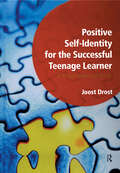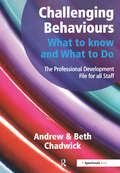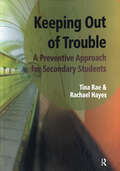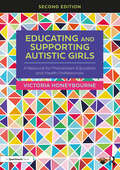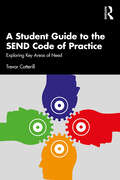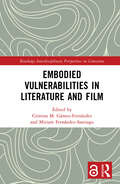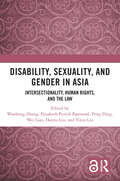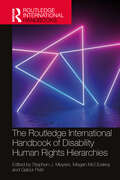- Table View
- List View
Reading Intervention Case Studies for School Psychologists: Evidence-Based Implementation and Analysis
by Melissa Coolong-Chaffin Renee O. Hawkins Michael I. AxelrodReading Intervention Case Studies for School Psychologists provides vivid, real-world examples of school-based interventions targeting students’ phonological awareness, phonics, fluency, and comprehension in reading. This book offers a rich variety of applied reading interventions in school settings , spanning strategies such as incidental teaching, word boxes, peer tutoring, taped words, story mapping, and beyond. Each case includes thorough descriptions of the specific area of concern, detailed intervention protocols, data collection and analysis methods, and tips for ensuring social acceptability and treatment integrity. School psychologists, along with related professionals in special education, general education, and speech-language pathology, will come away with new insights into this comprehensive set of well-researched and frequently applied reading interventions.
Medical, Dental, and Wellness Tourism: A Post-Pandemic Perspective (Advances in Hospitality and Tourism)
by Mary Schreiber Swenson Amit BansalMedical, Dental, and Wellness Tourism: A Post-Pandemic Perspective offers a thorough and informative guide to medical travel and tourism for the treatment of health-related issues. The book first defines medical, dental, and wellness tourism and travel for treatment and then goes on to look at the myriad issues involved, such as benefits and challenges of travel for treatment, how the COVID-19 pandemic has affected the treatment sectors in tourism, selecting the right destination and facility, ending your life in another country, the growing world of birth tourism, dental tourism, medical travel for second opinions, privacy and health data security, the importance of post-operative care, and more. The book explores why medical tourism is the answer to our healthcare crisis. The patient deserves the right to seek the highest quality of medical, dental and wellness care anywhere on the globe with transparent pricing. This volume provides an abundance of information necessary for practical solutions to healthcare needs, both to avoid the seemingly ever-rising cost of healthcare in the United States, offering choices and options outside the US as well as for choosing effective care in other countries. The volume also addresses advances in technology in the healthcare travel industry. A section on resources and experiences to aid in making the right healthcare decisions is included as well. The chapters answer important questions when considering healthcare outside the US, such as What options and choices are available globally How to choose the right medical, dental, pharma, or wellness location The benefits and challenges of travel for treatment What is involved in euthanasia in other countries How privacy of healthcare data maintained COVID-19 has changed the face of the globe. Patients have a new perspective on how they want to receive health and wellness care, and this includes a deeper dive into the world of medical, dental, and wellness tourism. The future is about customizing how and where the patient wants to receive their medical, dental, and wellness treatments, transparent pricing, and the ability to make choices and view options anywhere in the world. Employers, government agencies, and private organizations are able to control healthcare costs, forecast trends, and allow their employees to get the highest quality of care through specialized Centers of Excellence. The book offers a comprehensive guide to medical, dental, and wellness tourism, explains how technology plays a role, as well as proposes solutions to the current healthcare system. A must read for anyone interested in the future of our global healthcare system. Written by a renowned international speaker on medical, dental, and wellness tourism and travel for treatment, who has significant experience and advocate for affordable healthcare choices, this volume shares necessary information for those considering healthcare in other countries-those needing care as well as their healthcare professionals and loved ones.
Medical, Dental, and Wellness Tourism: A Post-Pandemic Perspective (Advances in Hospitality and Tourism)
by Mary Schreiber Swenson Amit BansalMedical, Dental, and Wellness Tourism: A Post-Pandemic Perspective offers a thorough and informative guide to medical travel and tourism for the treatment of health-related issues. The book first defines medical, dental, and wellness tourism and travel for treatment and then goes on to look at the myriad issues involved, such as benefits and challenges of travel for treatment, how the COVID-19 pandemic has affected the treatment sectors in tourism, selecting the right destination and facility, ending your life in another country, the growing world of birth tourism, dental tourism, medical travel for second opinions, privacy and health data security, the importance of post-operative care, and more. The book explores why medical tourism is the answer to our healthcare crisis. The patient deserves the right to seek the highest quality of medical, dental and wellness care anywhere on the globe with transparent pricing. This volume provides an abundance of information necessary for practical solutions to healthcare needs, both to avoid the seemingly ever-rising cost of healthcare in the United States, offering choices and options outside the US as well as for choosing effective care in other countries. The volume also addresses advances in technology in the healthcare travel industry. A section on resources and experiences to aid in making the right healthcare decisions is included as well. The chapters answer important questions when considering healthcare outside the US, such as What options and choices are available globally How to choose the right medical, dental, pharma, or wellness location The benefits and challenges of travel for treatment What is involved in euthanasia in other countries How privacy of healthcare data maintained COVID-19 has changed the face of the globe. Patients have a new perspective on how they want to receive health and wellness care, and this includes a deeper dive into the world of medical, dental, and wellness tourism. The future is about customizing how and where the patient wants to receive their medical, dental, and wellness treatments, transparent pricing, and the ability to make choices and view options anywhere in the world. Employers, government agencies, and private organizations are able to control healthcare costs, forecast trends, and allow their employees to get the highest quality of care through specialized Centers of Excellence. The book offers a comprehensive guide to medical, dental, and wellness tourism, explains how technology plays a role, as well as proposes solutions to the current healthcare system. A must read for anyone interested in the future of our global healthcare system. Written by a renowned international speaker on medical, dental, and wellness tourism and travel for treatment, who has significant experience and advocate for affordable healthcare choices, this volume shares necessary information for those considering healthcare in other countries-those needing care as well as their healthcare professionals and loved ones.
Exploring Sexuality and Disability: A Guide for Human Service Professionals
by Shanna Katz KattariOffering a current, comprehensive, and intersectional guide for students, practitioners, and researchers, this book synthesizes existing scholarship on culturally responsive practices that assist in exploring, understanding, and affirming the sexuality(ies) of disabled, chronically ill, neurodivergent, and Mad individuals. Drawing on an intersectional framework, it integrates insights drawn from an interdisciplinary body of scholarship including psychology, social work, sociology, history, political science, women and gender studies, cultural studies, and education along with perspectives from the practitioners who are actively defining the next generation of best practices. By highlighting the incredible resilience and resistance of disabled individuals’ and communities’ sexuality and sexual well-being, this book challenges narratives that rely primarily on a one-dimensional view derived from the medical model and the view of disability as something to be “fixed” – or at least tolerated – rather than celebrated. In a world that pathologizes and devalues the sexual existence of disabled individuals, it illustrates how to create thriving communities and relationships, and how they can organize to find their voice, providing a counter-narrative of empowerment that fosters hopefulness, power, and health. It will be of interest to all scholars, students, and professionals across a variety of professions, including social work, psychology, counseling, policy, healthcare, education, community organizing, and multiple social service settings.
Exploring Sexuality and Disability: A Guide for Human Service Professionals
by Shanna Katz KattariOffering a current, comprehensive, and intersectional guide for students, practitioners, and researchers, this book synthesizes existing scholarship on culturally responsive practices that assist in exploring, understanding, and affirming the sexuality(ies) of disabled, chronically ill, neurodivergent, and Mad individuals. Drawing on an intersectional framework, it integrates insights drawn from an interdisciplinary body of scholarship including psychology, social work, sociology, history, political science, women and gender studies, cultural studies, and education along with perspectives from the practitioners who are actively defining the next generation of best practices. By highlighting the incredible resilience and resistance of disabled individuals’ and communities’ sexuality and sexual well-being, this book challenges narratives that rely primarily on a one-dimensional view derived from the medical model and the view of disability as something to be “fixed” – or at least tolerated – rather than celebrated. In a world that pathologizes and devalues the sexual existence of disabled individuals, it illustrates how to create thriving communities and relationships, and how they can organize to find their voice, providing a counter-narrative of empowerment that fosters hopefulness, power, and health. It will be of interest to all scholars, students, and professionals across a variety of professions, including social work, psychology, counseling, policy, healthcare, education, community organizing, and multiple social service settings.
Independence Training for Visually Handicapped Children
by Doris ToozeFirst published in 1981, this book was written to help parents and teachers to participate in child-based mobility programmes, covering the needs of visually-handicapped children from pre-school to adulthood. It gives insight into ways in which these figures can make the world meaningful to young children, as well as making them aware of the special training that is necessary to develop the social skills of daily living that a sighted child acquires through imitation. Travel techniques must be learnt to enable these children to move independently and the book describes various methods that can be used by the blind traveller. It also examines the role of physical education and dance, both of particular importance for the visually-handicapped child at school age.
Policy and Power in Inclusive Education: Values into practice
by Melanie Nind Jonathan Rix Kieron Sheehy Katy SimmonsThe movement towards inclusive education is undoubtedly an international phenomenon, and it has resulted in the development of policy initiatives impacting on schools in all nations. This informative, wide-ranging text brings together key illustrative material from an international field. It adopts a critical perspective on policy issues, but goes beyond this by making explicit the assumptions that drive policy development. Readers will be encouraged to develop their own framework, allowing them to conduct policy analysis and evaluation within their own educational context.Students and researchers interested in how principles of inclusive education are being translated into educational practices around the world will find this book an enlightening read.
Positive Self-Identity for the Successful Teenage Learner: A Programme or Work
by Joost DrostUsing a narrative approach, teenagers are challenged to learn about themselves, about each other and about how to take control of their lives. The learning is presented in a series of lessons with comprehensive facilitator instructions and materials designed to engage teenagers in both group and individual activities. A story and characters provide a full range of emotions, from the overwhelming feelings of angst and anger to empathy, friendship support and happiness. The material complements the secondary SEAL agenda. A comprehensive guide will help the facilitator to capture the student's emotional world and turn their energies into meaningful and constructive projects. It also provides students with tools to practice and develop their emotional and social intelligence.
Challenging Behaviours - What to Know and What to Do: The Professional Development File for All Staff
by Andrew ChadwickThis title is written by Andrew & Beth Chadwick. If you deal with challenging behaviours this book includes strategies covering a range of special needs including autistic spectrum, aspergers, dyspraxia, dyslexia, depression, tourettes, obsessive compulsive disorder, oppositional defiant disorder, attention deficit hyperactivity disorder and specific learning difficulties. It addresses problems such as: Truanting; Swearing and verbal abuse; Theft; Bullying; Attention seeking; Drug abuse; Low self-esteem; and, Vandalism. It includes case histories to provide some insight into the difficult situations teachers may encounter in the classroom. It is suitable for all ages.
Keeping out of Trouble: A Preventive Approach for Secondary Students
by Tina Rae Rachael HayesThe Keeping Out of Trouble programme will enable secondary schools to provide interventions targeted at students who are, or are at risk of, committing criminal offences. By developing the students' awareness of victims, the consequences of their actions and sensitive issues as well as by encouraging students to engage in self-reflection, students will develop the strategies, knowledge and understanding to support themselves in making informed choices about their behaviour and future actions. This essential new resource is based on a programme that was developed by staff in the Youth Offending Team and The Hillingdon Pupil Referral Unit, who recognised that students needed more support. The programme fits in with the Every Child Matters agenda, tackling the 'Be Healthy' 'Stay Safe' 'Enjoy & Achieve' and 'Making a Positive Contribution' aims. The Keeping Out of Trouble programme consists of an initial tutorial session, followed by 16 group sessions and a final self-evaluation and target setting session. These strands of support aim to meet the following objectives: *To enable students to develop consequential thinking *To encourage the development of victim awareness *To develop an understanding of restorative work and ways that they can engage in this kind of work *To enable students to develop an awareness of their own feelings and the ability to label, identify and express these feelings in a safe way *To further develop personal insight, gaining knowledge of strengths and weaknesses and the ability to take structured criticism and feedback *To encourage the development of confidence and self-assurance *To encourage the development of self-reflection skills *To develop an awareness of the consequences of their behaviours - both for themselves and others *To further develop a sense of responsibility and locus of control, that is, to have internal control *To encourage students to further develop and appreciate the perspectives of others, that is, empathy *To encourage students to develop a range of strategies to pre-empt and avoid anti-social and offending behaviours *To encourage facilitators and students to cooperate as joint problem-solvers, engaging in wide ranging discussions around key issues The programme is aimed at: *All young people, especially those who have demonstrated anti-social or criminal behaviour *A group of young people of a similar age *Young people who have not been identified as prolific offenders
Independence Training for Visually Handicapped Children (Routledge Library Editions: Children And Disability Ser. #6)
by Doris ToozeFirst published in 1981, this book was written to help parents and teachers to participate in child-based mobility programmes, covering the needs of visually-handicapped children from pre-school to adulthood. It gives insight into ways in which these figures can make the world meaningful to young children, as well as making them aware of the special training that is necessary to develop the social skills of daily living that a sighted child acquires through imitation. Travel techniques must be learnt to enable these children to move independently and the book describes various methods that can be used by the blind traveller. It also examines the role of physical education and dance, both of particular importance for the visually-handicapped child at school age.
Policy and Power in Inclusive Education: Values into practice
by Jonathan Rix Katy Simmons Melanie Nind Kieron SheehyThe movement towards inclusive education is undoubtedly an international phenomenon, and it has resulted in the development of policy initiatives impacting on schools in all nations. This informative, wide-ranging text brings together key illustrative material from an international field. It adopts a critical perspective on policy issues, but goes beyond this by making explicit the assumptions that drive policy development. Readers will be encouraged to develop their own framework, allowing them to conduct policy analysis and evaluation within their own educational context.Students and researchers interested in how principles of inclusive education are being translated into educational practices around the world will find this book an enlightening read.
Positive Self-Identity for the Successful Teenage Learner: A Programme or Work
by Joost DrostUsing a narrative approach, teenagers are challenged to learn about themselves, about each other and about how to take control of their lives. The learning is presented in a series of lessons with comprehensive facilitator instructions and materials designed to engage teenagers in both group and individual activities. A story and characters provide a full range of emotions, from the overwhelming feelings of angst and anger to empathy, friendship support and happiness. The material complements the secondary SEAL agenda. A comprehensive guide will help the facilitator to capture the student's emotional world and turn their energies into meaningful and constructive projects. It also provides students with tools to practice and develop their emotional and social intelligence.
Challenging Behaviours - What to Know and What to Do: The Professional Development File for All Staff
by Andrew ChadwickThis title is written by Andrew & Beth Chadwick. If you deal with challenging behaviours this book includes strategies covering a range of special needs including autistic spectrum, aspergers, dyspraxia, dyslexia, depression, tourettes, obsessive compulsive disorder, oppositional defiant disorder, attention deficit hyperactivity disorder and specific learning difficulties. It addresses problems such as: Truanting; Swearing and verbal abuse; Theft; Bullying; Attention seeking; Drug abuse; Low self-esteem; and, Vandalism. It includes case histories to provide some insight into the difficult situations teachers may encounter in the classroom. It is suitable for all ages.
Keeping out of Trouble: A Preventive Approach for Secondary Students
by Tina Rae Rachael HayesThe Keeping Out of Trouble programme will enable secondary schools to provide interventions targeted at students who are, or are at risk of, committing criminal offences. By developing the students' awareness of victims, the consequences of their actions and sensitive issues as well as by encouraging students to engage in self-reflection, students will develop the strategies, knowledge and understanding to support themselves in making informed choices about their behaviour and future actions. This essential new resource is based on a programme that was developed by staff in the Youth Offending Team and The Hillingdon Pupil Referral Unit, who recognised that students needed more support. The programme fits in with the Every Child Matters agenda, tackling the 'Be Healthy' 'Stay Safe' 'Enjoy & Achieve' and 'Making a Positive Contribution' aims. The Keeping Out of Trouble programme consists of an initial tutorial session, followed by 16 group sessions and a final self-evaluation and target setting session. These strands of support aim to meet the following objectives: *To enable students to develop consequential thinking *To encourage the development of victim awareness *To develop an understanding of restorative work and ways that they can engage in this kind of work *To enable students to develop an awareness of their own feelings and the ability to label, identify and express these feelings in a safe way *To further develop personal insight, gaining knowledge of strengths and weaknesses and the ability to take structured criticism and feedback *To encourage the development of confidence and self-assurance *To encourage the development of self-reflection skills *To develop an awareness of the consequences of their behaviours - both for themselves and others *To further develop a sense of responsibility and locus of control, that is, to have internal control *To encourage students to further develop and appreciate the perspectives of others, that is, empathy *To encourage students to develop a range of strategies to pre-empt and avoid anti-social and offending behaviours *To encourage facilitators and students to cooperate as joint problem-solvers, engaging in wide ranging discussions around key issues The programme is aimed at: *All young people, especially those who have demonstrated anti-social or criminal behaviour *A group of young people of a similar age *Young people who have not been identified as prolific offenders
Educating and Supporting Autistic Girls: A Resource for Mainstream Education and Health Professionals
by Victoria HoneybourneAutistic girls, especially those educated in mainstream environments, have often been missed or misdiagnosed. There is now, however, greater awareness of how autism can present in females, why these girls can remain ‘invisible’, and what education and health professionals can do to provide better support. Fully revised and updated, this practical book shines a light on the insights, opinions and experiences of autistic girls and women, providing a rich insight into school life from an autistic perspective. It explores the difficulties and disadvantages that autistic girls can face in educational settings and offers guidance on how to best support them, with a wealth of strategies reflecting good practice in the field of autism and education. The resource also contains a broad range of worksheets and activities on key issues and includes new sections on anxiety, masking, home life, social media, gender and sexual identity. Key features include: A wealth of case studies to illustrate different topics Guidance on best practice when working with autistic girls New audits to help staff and pupils to identify strengths and areas to improve Easy-to-implement strategies and tips to help professionals adapt to environments and policies for autistic students Activities and resources for young autistic females to support them in developing self-awareness, coping strategies and learning skills With the voices of autistic girls and young women woven throughout, drawing upon their experiences of education – from learning and communication, to friendships, transitions and interpreting the world – this is an essential resource for education and health professionals working with autistic girls, particularly in mainstream environments.
Educating and Supporting Autistic Girls: A Resource for Mainstream Education and Health Professionals
by Victoria HoneybourneAutistic girls, especially those educated in mainstream environments, have often been missed or misdiagnosed. There is now, however, greater awareness of how autism can present in females, why these girls can remain ‘invisible’, and what education and health professionals can do to provide better support. Fully revised and updated, this practical book shines a light on the insights, opinions and experiences of autistic girls and women, providing a rich insight into school life from an autistic perspective. It explores the difficulties and disadvantages that autistic girls can face in educational settings and offers guidance on how to best support them, with a wealth of strategies reflecting good practice in the field of autism and education. The resource also contains a broad range of worksheets and activities on key issues and includes new sections on anxiety, masking, home life, social media, gender and sexual identity. Key features include: A wealth of case studies to illustrate different topics Guidance on best practice when working with autistic girls New audits to help staff and pupils to identify strengths and areas to improve Easy-to-implement strategies and tips to help professionals adapt to environments and policies for autistic students Activities and resources for young autistic females to support them in developing self-awareness, coping strategies and learning skills With the voices of autistic girls and young women woven throughout, drawing upon their experiences of education – from learning and communication, to friendships, transitions and interpreting the world – this is an essential resource for education and health professionals working with autistic girls, particularly in mainstream environments.
A Student Guide to the SEND Code of Practice: Exploring Key Areas of Need
by Trevor CotterillIn this essential textbook for students, Trevor Cotterill delves into the four broad areas of need identified in the SEND Code of Practice (2015), providing a spotlight on current research into a range of identified difficulties as well as outlining the appropriate pedagogical approaches required to support these needs in children and young people. Closely mirroring the SEND Code of Practice (2015), each distinct area of need associated with cognition and learning, communication and interaction, physical and sensory issues and social, emotional and mental health difficulties features essential overviews of research and current thinking within each area. Supported with case studies, learning objectives and reflection points, this text includes discussions on autistic spectrum disorders, profound and multiple learning difficulties, ADHD, mental health, physical and sensory difficulties and adverse childhood experiences as they relate to the SEND Code of Practice (2015). Fully endorsed by evidence-based research involving children, young people, adults and their families, this text encourages students to understand that SEND is a complex area and provides opportunities to reflect on previous experience, harnessing them with knowledge for future practice. Concise yet rigorous in its explanations and coupled with signposted activities and suggestions for further reading throughout, A Student Guide to the SEND Code of Practice will be invaluable to undergraduate students undertaking a programme of study incorporating special educational needs and disability as a single or joint honours.
A Student Guide to the SEND Code of Practice: Exploring Key Areas of Need
by Trevor CotterillIn this essential textbook for students, Trevor Cotterill delves into the four broad areas of need identified in the SEND Code of Practice (2015), providing a spotlight on current research into a range of identified difficulties as well as outlining the appropriate pedagogical approaches required to support these needs in children and young people. Closely mirroring the SEND Code of Practice (2015), each distinct area of need associated with cognition and learning, communication and interaction, physical and sensory issues and social, emotional and mental health difficulties features essential overviews of research and current thinking within each area. Supported with case studies, learning objectives and reflection points, this text includes discussions on autistic spectrum disorders, profound and multiple learning difficulties, ADHD, mental health, physical and sensory difficulties and adverse childhood experiences as they relate to the SEND Code of Practice (2015). Fully endorsed by evidence-based research involving children, young people, adults and their families, this text encourages students to understand that SEND is a complex area and provides opportunities to reflect on previous experience, harnessing them with knowledge for future practice. Concise yet rigorous in its explanations and coupled with signposted activities and suggestions for further reading throughout, A Student Guide to the SEND Code of Practice will be invaluable to undergraduate students undertaking a programme of study incorporating special educational needs and disability as a single or joint honours.
Embodied VulnerAbilities in Literature and Film (Routledge Interdisciplinary Perspectives on Literature)
Embodied VulnerAbilities in Literature and Film includes a collection of essays exploring the ways in which recent literary and filmic representations of vulnerability depict embodied forms of vulnerability across languages, media, genres, countries, and traditions in the late 20th and early 21st centuries. The volume gathers 12 chapters penned by scholars from Japan, the USA, Canada, and Spain which look into the representation of vulnerability in human bodies and subjectivities. Not only is the array of genres covered in this volume significant— from narrative, drama, poetry, (auto)documentary, or film— in fiction and nonfiction, but also the varied cultural and linguistic coordinates of the literary and filmic texts scrutinized—from the USA, Canada, Spain, France, the Middle East, to Japan. Readers who decide to open the cover of this volume will benefit from becoming familiar with a relatively old topic— that of vulnerability— from a new perspective, so that they can consider the great potential of this critical concept anew.
Embodied VulnerAbilities in Literature and Film (Routledge Interdisciplinary Perspectives on Literature)
by Gámez-Fernández, Cristina M Miriam Fernández-SantiagoEmbodied VulnerAbilities in Literature and Film includes a collection of essays exploring the ways in which recent literary and filmic representations of vulnerability depict embodied forms of vulnerability across languages, media, genres, countries, and traditions in the late 20th and early 21st centuries. The volume gathers 12 chapters penned by scholars from Japan, the USA, Canada, and Spain which look into the representation of vulnerability in human bodies and subjectivities. Not only is the array of genres covered in this volume significant— from narrative, drama, poetry, (auto)documentary, or film— in fiction and nonfiction, but also the varied cultural and linguistic coordinates of the literary and filmic texts scrutinized—from the USA, Canada, Spain, France, the Middle East, to Japan. Readers who decide to open the cover of this volume will benefit from becoming familiar with a relatively old topic— that of vulnerability— from a new perspective, so that they can consider the great potential of this critical concept anew.
Disability, Sexuality, and Gender in Asia: Intersectionality, Human Rights, and the Law
This book introduces experiential knowledge of the intersectionality of disability, sexuality, and gender equality issues. Scholars and disabled persons’ organizations in different Asian countries such as China, Vietnam, Myanmar, Nepal, and Japan have contributed to the book. It is a preliminary introduction of the frontline practice of Asian disability activism and the experience of women and LGBTIQ people with disabilities. It presents the direct participation of disability advocates in mapping how both women with disabilities and LGBTIQ individuals with disabilities realize their rights such as identity, work rights, personal safety, and sexual rights. Studies presented here explore the experience of empowering diverse disability groups and advocating for equality and non-discrimination. It explains how to use the leverage of the Convention on the Rights of Persons with Disabilities (CRPD) for further human rights campaigns in a broader context for disadvantaged groups. This collection is the product of a participatory research project, which aims to increase the capabilities of local disabled persons’ organizations and NGOs in utilizing human rights laws and encourage dialogue and collaboration between academia, people with disabilities, and human rights advocates. It will be essential reading for academics, researchers, policy-makers, and campaign groups.
Disability, Sexuality, and Gender in Asia: Intersectionality, Human Rights, and the Law
by Wanhong Zhang, Elisabeth Perioli Bjørnstøl, Peng Ding, Wei Gao, Hanxu Liu and Yijun LiuThis book introduces experiential knowledge of the intersectionality of disability, sexuality, and gender equality issues. Scholars and disabled persons’ organizations in different Asian countries such as China, Vietnam, Myanmar, Nepal, and Japan have contributed to the book. It is a preliminary introduction of the frontline practice of Asian disability activism and the experience of women and LGBTIQ people with disabilities. It presents the direct participation of disability advocates in mapping how both women with disabilities and LGBTIQ individuals with disabilities realize their rights such as identity, work rights, personal safety, and sexual rights. Studies presented here explore the experience of empowering diverse disability groups and advocating for equality and non-discrimination. It explains how to use the leverage of the Convention on the Rights of Persons with Disabilities (CRPD) for further human rights campaigns in a broader context for disadvantaged groups. This collection is the product of a participatory research project, which aims to increase the capabilities of local disabled persons’ organizations and NGOs in utilizing human rights laws and encourage dialogue and collaboration between academia, people with disabilities, and human rights advocates. It will be essential reading for academics, researchers, policy-makers, and campaign groups.
The Routledge International Handbook of Disability Human Rights Hierarchies (Routledge International Handbooks)
Disability is defined by hierarchy. Regardless of culture or context, persons with disabilities are almost always pushed to the bottom of the social hierarchy. With the advent of the Convention on the Rights of Persons with Disabilities (2006), disability human rights seemingly provided a path forward for tearing down ableist social hierarchies and ensuring that all persons with disabilities everywhere were treated equally. Despite important progress, the disability human rights project not only remains incomplete, but has often created new hierarchies among persons with disabilities themselves or across the human rights it promotes. Certain groups of persons with disabilities have gained new voices while others remain silenced and certain rights are prioritized over others depending on what states, international organizations, or advocates want rather than what those on the ground need most. This volume was inspired both by the continued need to expose human rights violations against persons with disabilities, but to also explore the nuanced role that hierarchies play in the spread, implementation, and protection of disability human rights. The enjoyment of human rights is not equal nor is the recognition of specific individuals and groups’ rights. In order to change this situation, inequalities across the disability human rights movement must be explored. Divided into five parts: Who counts as disabled? Political, social, and cultural context Which rights on top, whose rights on bottom? Pushed to the periphery in the disability rights movement Representations of disability and comprised of 34 newly-written chapters including case-studies from the Anglophone Caribbean, Bangladesh, Bosnia-Herzegovina, China, Ghana, Haiti, Hungary, India, Israel, Kenya, Latin America, Poland, Russia, Scotland, Serbia and South Africa, and other countries, this book will be of interest to all scholars and students of disability studies, sociology, human rights law and social policy.
The Routledge International Handbook of Disability Human Rights Hierarchies (Routledge International Handbooks)
by Stephen J. Meyers Megan McCloskey Gabor PetriDisability is defined by hierarchy. Regardless of culture or context, persons with disabilities are almost always pushed to the bottom of the social hierarchy. With the advent of the Convention on the Rights of Persons with Disabilities (2006), disability human rights seemingly provided a path forward for tearing down ableist social hierarchies and ensuring that all persons with disabilities everywhere were treated equally. Despite important progress, the disability human rights project not only remains incomplete, but has often created new hierarchies among persons with disabilities themselves or across the human rights it promotes. Certain groups of persons with disabilities have gained new voices while others remain silenced and certain rights are prioritized over others depending on what states, international organizations, or advocates want rather than what those on the ground need most. This volume was inspired both by the continued need to expose human rights violations against persons with disabilities, but to also explore the nuanced role that hierarchies play in the spread, implementation, and protection of disability human rights. The enjoyment of human rights is not equal nor is the recognition of specific individuals and groups’ rights. In order to change this situation, inequalities across the disability human rights movement must be explored. Divided into five parts: Who counts as disabled? Political, social, and cultural context Which rights on top, whose rights on bottom? Pushed to the periphery in the disability rights movement Representations of disability and comprised of 34 newly-written chapters including case-studies from the Anglophone Caribbean, Bangladesh, Bosnia-Herzegovina, China, Ghana, Haiti, Hungary, India, Israel, Kenya, Latin America, Poland, Russia, Scotland, Serbia and South Africa, and other countries, this book will be of interest to all scholars and students of disability studies, sociology, human rights law and social policy.
